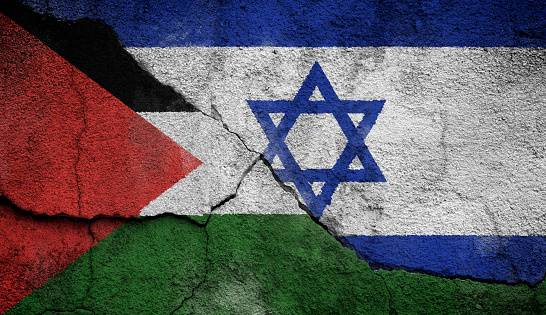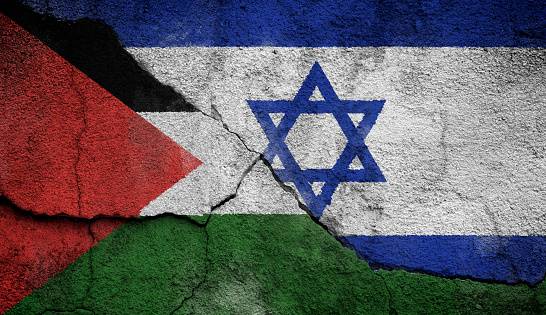

The New York Times article ‘Screams Without Words: How Hamas Weaponised Sexual Violence on October 7’ is a shockingly graphic, repulsive and distressing piece of journalism. It revels in the most sadistic descriptions of psychopathic sexual torture.
Several good critiques of its bizarre claims and use of dubious sources have been published. This is important work but we also need to try and understand what effects the article has, and what work it does.
We should ask a set of questions about any account of violence: what form does it take, and what work does it do? Does it help us understand this violence, or does it confuse the issues? Is it likely to reduce violence, or to increase violence?
The consequences of an account of violence do not necessarily depend on the conscious intentions of the author. However, descriptions of violence can be deliberate or manipulative attempts to produce specific effects.
The problem with lurid narrations of violence is that they tend to trigger strong emotional responses which short-circuit our ability to reflect thoughtfully and understand the issues in ways that lead us to effective interventions. Instead, they can trigger fear and rage that leads to further dysfunctional and destructive responses.
“Screams without words” and claims without contexts: trauma porn journalism inciting violence.
We have already seen how exaggerated and outright false claims about the 7 October attacks rapidly circulated and triggered these kinds of fear, rage, and hatred creating the social conditions for the relentless bombing of Gaza.
Widely circulated fiction, such as the beheading of 40 babies, legitimated the revenge killing of thousands of people. Because this story was so shocking it rapidly circulated on social media, uncritically repeated by people right up to the president of the US, without stopping to ask whether it was true or not.
This is why we need to understand the risks and effects of accounts of violence.
The New York Times article is a description of nightmarish forms of cruelty that triggers such overwhelming physical and emotional revulsion in the reader that it short-circuits our ability to think, and instead invokes raw instinctual responses. The risk is that these responses may be of the most destructive kind. This may even be the deliberate and manipulative intention of the authors and editors.
So, what kind of story is this? What is its form? Its genre?
The term ‘trauma porn’ has been coined to describe this kind of graphic account of unendurable horror. It is designed to trigger an intense emotional response, often specifically to produce a rapid and superficial engagement. In these cases, it can function as clickbait, grabbing attention and producing shock, but offering no effective understanding.
A long tradition of this kind account exists in the colonial rape narrative. Here bogus claims of the rape of the colonising woman by the colonised man triggers catastrophic feelings of vulnerability in the colonial community. They react with overwhelming cruelty and violence, such as lynching or the vengeful annihilation of entire communities.
These mythical sexual assaults invoke the intolerable feeling that despite (or maybe because of) their relentless and brutal control of the colonised people, the coloniser may suddenly find their system of dominance intimately vulnerable to breaches.
This is itself a particular form of a foundational colonial myth: the imagined savagery of the native. The ‘primitive’ indigenous people are depicted as engaged in acts of extreme barbaric cruelty and destructiveness. This myth does two things. It creates an imagined world in which the coloniser is reasonable, bringing civilization, morality and order to the chaos of the colony.
This fantasy justifies the brutal imposition of social control on indigenous communities, while hiding the violence of that control and instead attributing violence to oppressed peoples. It allows any acts of resistance to colonisation to be framed in a way that erases any understanding of these acts as meaningful political tactics to achieve liberation.
Instead it reads them as further evidence of the innate chaotic savagery of the native. This savagery must then be controlled by even greater brutality.
This is exactly the work done by The New York Times article.
It constructs a fantasy of unimaginable horror in lurid and feverish detail, while completely erasing any possible context that might make the events of 7 October comprehensible. Explanation is not justification, but it is a precondition of understanding and solving the actual underlying problems.
The article pretends to be about sexual violence as a weapon of war, yet offers absolutely nothing to explain its putative subject.
Sexual violence in social conflicts and military attacks is a longstanding and widespread problem that has been examined in depth by researchers and activists for many years. Yet the article provides no discussion of all that we know about the horrors of rape of the enemy as tacit reward for combatants, of sexual violence as a tactic for terrorising and demoralising enemy populations, or of the pervasive links between military masculinities and sexual violence.
While detailing fantastical accounts of bizarre sexual sadism in the 7 October attacks, the article remains silent about the ongoing sexual violence of the occupation.
There is no mention of the rapes of Palestinians in the Nakba, or to the ongoing use of sexual violence and sexual humiliation against Palestinian women by Israeli soldier and settlers in the following decades.
There is no mention of sexual assaults of prisoners and hostages of the Israeli state, including the rape of young boys.
There is no mention of the notorious statements of the leading IDF military rabbi Colonel Eyal Karin, justifying the rape of women by Israeli soldiers, who are “permitted to breach the walls of modesty” and “satisfy the evil inclination by lying with attractive gentile women against their will, out of the consideration of difficulties faced by the soldiers, and for overall success”.
The article does nothing at all to help us understand or prevent sexual violence, and still less to reflect on broader crisis of endemic violence against women.
There is no mention of the 7 000 women and 4 500 girls already killed in the attacks on Gaza since 7 October.
There is no mention of the many more girls and women who have been catastrophically injured, their thousands of amputations — many undertaken without anaesthetics.
Instead, the article strategically explodes an annihilating trauma bomb, devastating our emotions and shattering our ability to think. It offers nothing coherent to fill that space, no understanding of sexual violence, no grasp of sexual violence in combat, no grasp of the social conditions prior to the 7 October attacks, and no acknowledgement of the violence of its aftermath.
The devastation of the trauma bomb creates a vacuum in which other chaotic and destructive impulses are sucked in. Horror, terror and rage take over, and in the absence of real explanation, we are drawn to imagine that the only way to account for this unspeakable cruelty is to fall back on fantasies of innate and extreme cruelty and sadism.
The perpetrators are psychopathic savages, inhuman barbarians. At this point the instinctual response is annihilation.
The desire for annihilation rushes beyond the individual perpetrators to encompass all that they are assumed to represent. Not just the alleged criminals, but all of Hamas. Not just all of Hamas, but all Palestinians. Not just all Palestinians, but all Arabs, all Muslims. We arrive back at the colonial logic that declares: “Exterminate the brutes”.
We can now see the nature and work of this article. The clickbait trauma porn, the narrative of the colonial rape, that inevitable story of native savagery that requires colonial violence to impose order.
The article is not about understanding sexual violence. It is incitement to violence, incitement that follows a well-established colonial logic: the savagery of the native, a sadistic rapist, requires brutal colonial violence to impose order. This hallucination of the savagery of the colonised makes the violence of the coloniser seem ethical, rational and necessary.
The violence of the Israeli state does not solely rely on its massive military power backed by the West in general and the United States in particular. It also relies on ideological justification, particularly for certain communities in the West, communities such as the readers of The New York Times: educated, liberal people who might otherwise shy away from certain extreme human rights abuses.
It is for them that the trauma bomb does its work, obliterating all understanding, all empathy. Palestinians are reduced to inhuman savages that must be destroyed. The incitement to violence does its work. The genocide continues.
Anthony Collins is an honorary research fellow at the Centre for the Study of Violence and the Reparative Quest at Stellenbosch University, and honorary visiting professor at Rhodes University.
Descriptions of violence can be deliberate or manipulative attempts to produce specific effects




